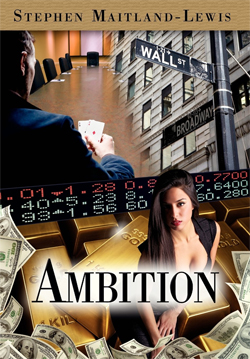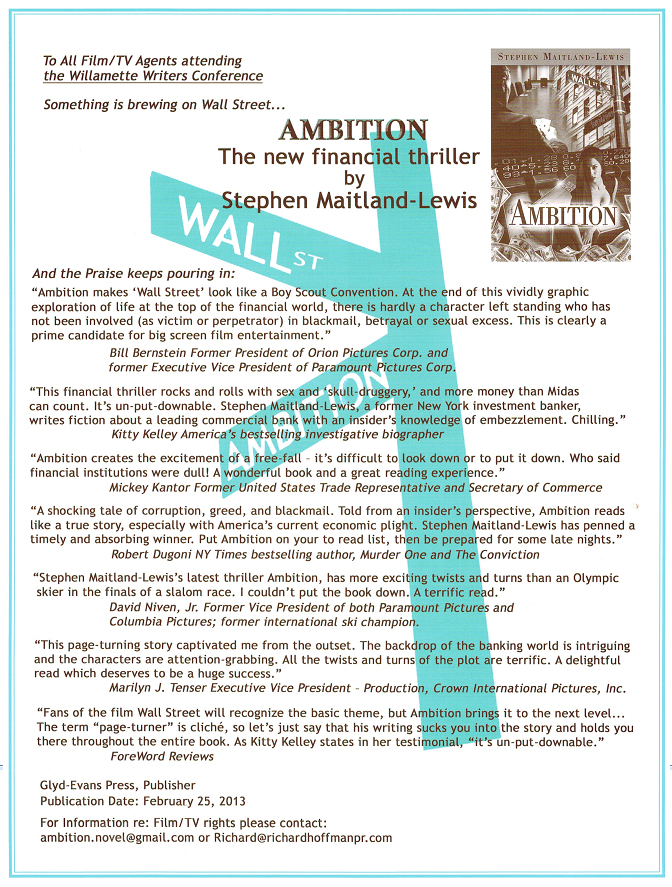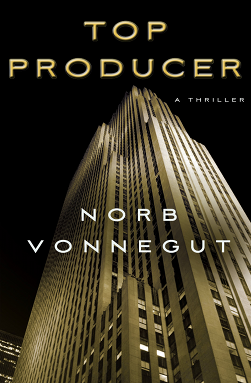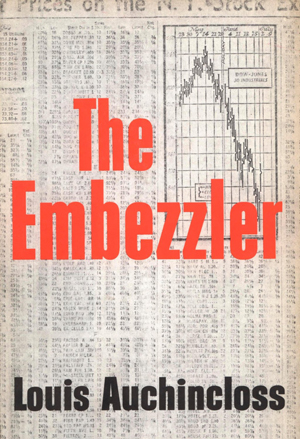As the saying goes, “the times, they are a-changin’.” The book publishing industry is changing rapidly as manifested by: established authors self-publishing, expanding e-book titles, disappearing book stores and exploding genres. It’s more and more difficult to dig through the clutter to find the kind of books you might want to read. Readers who prefer mysteries, westerns, military thrillers, romance, and other well established genres could find lots of help on the Internet. But, there are virtually no forums for readers who enjoy business fiction and business thrillers. Therefore, I decided to create the Business Fiction Blog to provide readers commentary and insights about this growing genre and, occasionally, to comment about my own personal writing. Owing to my fifty years of experience as a business executive, computer entrepreneur, and business turnaround consultant, I am uniquely qualified to help the reader identify those business fiction novels that actually achieve the verisimilitude that the genre demands.
So, here we go, author-to-reader, and reader-to-reader:
Business fiction is distinguished from general fiction as follows:
- In a business fiction novel (or a business-thriller novel) the plot’s major conflicts are driven by business issues.
- The major characters in the novel are executives, managers, directors, employees, or investors in the business.
 Save the Tiger by Steve Shagan (the 1973 screen adaptation won Jack Lemon an Oscar) is a business novel. Harry Stoner is in the garment business. His company is failing. He hopes that the new line that is being developed will revitalize the company. However, he needs a loan to finance the new line of clothing and he is unable to find money from legitimate sources. The mob offers financing but Harry and his partner don’t like the risks. His cutter and his designer, both of whom are critical to getting out the new line, are in perpetual conflict and may resign. In order to get orders from large buyers, Harry needs to bribe them with prostitutes. One buyer has a heart attack during a sex act. Harry’s high stress causes him to see visions of his dead WWII buddies while he’s making a presentation. The Novel’s central question is: How will Harry solve his business problems?
Save the Tiger by Steve Shagan (the 1973 screen adaptation won Jack Lemon an Oscar) is a business novel. Harry Stoner is in the garment business. His company is failing. He hopes that the new line that is being developed will revitalize the company. However, he needs a loan to finance the new line of clothing and he is unable to find money from legitimate sources. The mob offers financing but Harry and his partner don’t like the risks. His cutter and his designer, both of whom are critical to getting out the new line, are in perpetual conflict and may resign. In order to get orders from large buyers, Harry needs to bribe them with prostitutes. One buyer has a heart attack during a sex act. Harry’s high stress causes him to see visions of his dead WWII buddies while he’s making a presentation. The Novel’s central question is: How will Harry solve his business problems?
 On the other hand, “The Great Gatsby” by F. Scott Fitzgerald is not a Business Novel. Gatsby is newly rich and hosts lavish parties that attract glamorous people. But the conflicts in the novel arise from his attraction to Daisy, Tom’s wife, and Tom’s relationship with his mistress, Myrtle, Gatsby’s envy of Tom, and Tom’s antipathy towards Gatsby. The fact that Gatsby appears to have acquired his money illicitly is not material to the plot. Also, no one in the novel has a job. The novel’s central question:
On the other hand, “The Great Gatsby” by F. Scott Fitzgerald is not a Business Novel. Gatsby is newly rich and hosts lavish parties that attract glamorous people. But the conflicts in the novel arise from his attraction to Daisy, Tom’s wife, and Tom’s relationship with his mistress, Myrtle, Gatsby’s envy of Tom, and Tom’s antipathy towards Gatsby. The fact that Gatsby appears to have acquired his money illicitly is not material to the plot. Also, no one in the novel has a job. The novel’s central question:
How will the emotional and sexual relationships among Gatsby, Daisy, Tom and Myrtle be resolved?
Examples of business novels and business-thrillers are: Company Man by Joseph Finder, Sweet Talking Money by Harry Bingham, Downtick by Regan C. Ashbaugh, The Boss by Stanley Pottinger, and, of course, my novel, Saving the Karamazovs.


 Vonnegut employs the first-person point of view, as well as the financial jargon of a professional, to convincingly put the reader in the shoes of a successful stockbroker in Midtown Manhattan. Grove O’Rourke, Southern-born and Harvard-educated, works for an investment bank, a place where “the elite go to get ideas and leave their money.” He handles approximately two billion dollars, and being a “top producer,” consistently delivers good returns.
Vonnegut employs the first-person point of view, as well as the financial jargon of a professional, to convincingly put the reader in the shoes of a successful stockbroker in Midtown Manhattan. Grove O’Rourke, Southern-born and Harvard-educated, works for an investment bank, a place where “the elite go to get ideas and leave their money.” He handles approximately two billion dollars, and being a “top producer,” consistently delivers good returns. It is therefore somewhat prescient that Auchincloss’s 1966 novel, The Embezzler, addressed an issue that would both dominate the headlines and affect a substantial portion of society 42 years later—namely flagrant malfeasance of highly placed and trusted members of the financial elite.
It is therefore somewhat prescient that Auchincloss’s 1966 novel, The Embezzler, addressed an issue that would both dominate the headlines and affect a substantial portion of society 42 years later—namely flagrant malfeasance of highly placed and trusted members of the financial elite.